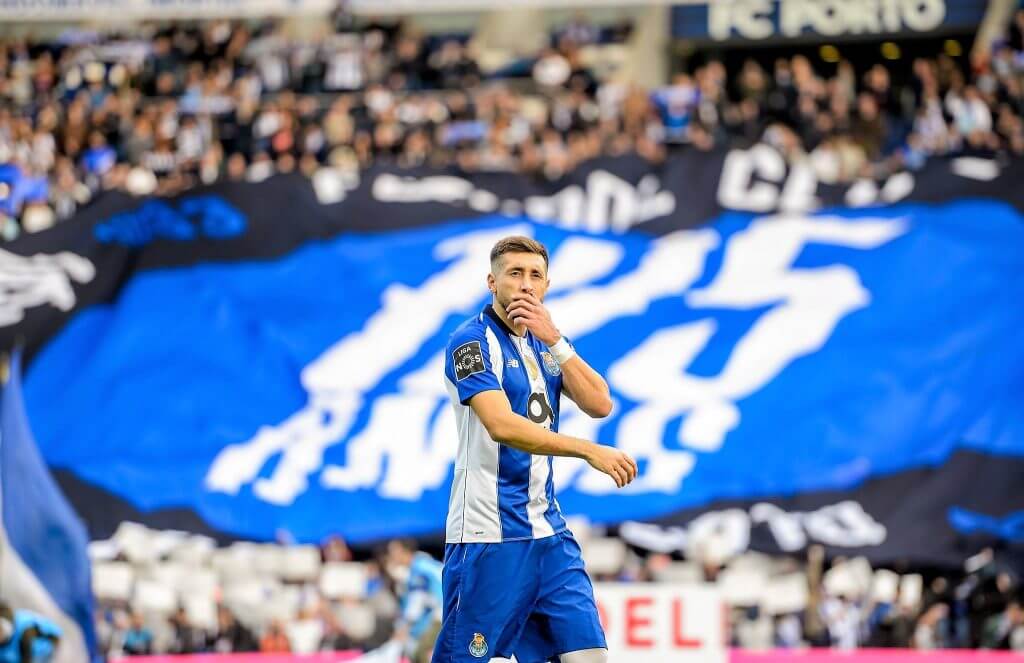The sport with the biggest following in the country, Mexican football, is at a key moment to make a splash and start making a name for itself in the Old Continent. We invite you to get to know its league, its teams, its players and its national team.
Turning promise into reality. Football in Mexico is going through one of its best moments in terms of the emergence of young talent that it cannot afford to miss out on. To do so, both clubs and fans need to open their minds and trust in exploiting their full potential with the help of European professionals, capable of polishing Mexican diamonds in order to end up triumphing in the elite. This has been one of the main obstacles that football in this Latin American country has faced: to definitively face the challenge of exporting its promising young players so that they can end up training in Europe.
In fact, this problem can be clearly seen from the Old Continent. Brazil, Argentina, Uruguay and even Colombia are the answers most frequently given by European fans to the question of which Latin American countries reign supreme in terms of talent in Latin American football. And it is up to Mexico to change this answer. In fact, players like Hugo Sánchez, Luis García, Cuauhtémoc Blanco or Rafa Márquez paved the way by showing that it is possible to succeed in European football, leaving the baton now to a generation that has the obligation not to look only to Liga MX and make the decision to make the leap to Europe soon.
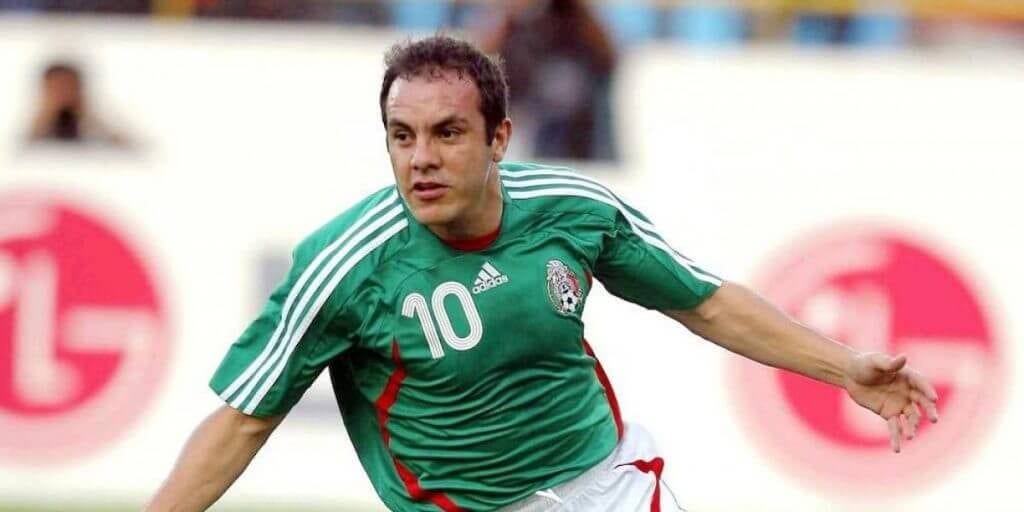
However, beyond the duty of putting oneself in the hands of European professionals for that final push to make it in the world of football, it is worth highlighting the work being done in Mexico’s Primera División: Liga MX, the most dominant competition of all the nations that make up CONCACAF.
Liga MX: a waking giant
It is here to stay. The Liga BBVA Bancomer MX or Liga MX has established itself on its own merits in the world of football as one of the best leagues in Latin America. Behind the Argentinian (Primera División) and Brazilian (Serie A) championships, the Mexican Primera División is one of the strongest thanks to the involvement of its clubs. The fact is that the clubs that fight season after season to be the champion stand out for their fierce competitiveness, something that has allowed Liga MX to grow by leaps and bounds and to have great players in this competition, who choose to succeed in Mexico rather than try to do so in Europe.
A Europe that is not used to the way Latin American leagues work.
Like most of these leagues, the MX divides its annual competition into two short tournaments that are decided independently in the so-called Liguilla. However, when determining which team is relegated to the Liga de Ascenso (Second Division), the average points per game played is taken into account.
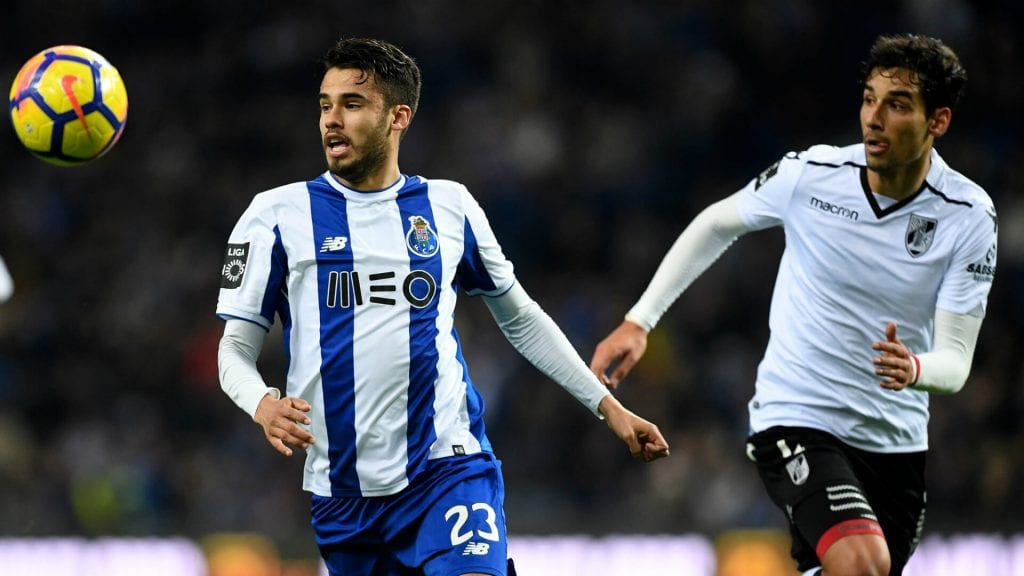
The Apertura tournament kicks off at the end of July and ends just before the start of December. The 18 teams that make up the Mexican Primera División face each other in a single match – there are no home and away games – for 17 exciting rounds that give a glimpse of which clubs have worked best during the transfer window and what goals they have set themselves. The eight best-placed clubs – in the event of a tie on points, the difference between goals scored and goals conceded takes precedence – advance to the eagerly awaited and exciting Liguilla. This final phase is played as a direct knockout – quarter-finals, semi-final and final – and the pairings are not drawn by lot, but by position in the standings. In other words, the first team will play against the eighth, the second against the seventh, the third against the sixth and the fourth against the fifth; all of these two-legged matches. Champion and runner-up of this Liguilla will represent Liga MX in the CONCACAF Champions League.
However, despite having a better path to the title, the team that finishes top of the table is by no means guaranteed to win the Liguilla, as was seen for example in this same 2018/2019 season. Cruz Azul finished the regular phase victorious thanks to their 36 points after eleven wins, three draws and three defeats, but they fell just short of lifting the title in the final. La Máquina Cementera’ faced Club América in the Final – precisely the second-placed team in the regular phase with 33 points – and were defeated after a goalless draw in the first leg and then a goalless draw at home in the second leg. The scorer of these two decisive goals was Edson Álvarez, one of Mexico’s most promising young players, who should not be long in making the leap to Europe.
The Clausura tournament starts in the first week of January and ends at the beginning of May. With the same competition system as the Apertura, the Clausura is one of the most exciting parts of the Liga MX, as the teams that have not achieved the expected results in the Apertura have to give their all in the remaining 17 rounds. It is worth noting that the matches are played at the stadium of the team that played the away match of each round during the Apertura. In the current Clausura campaign, eleven matches have already been played and it is Club León who currently reigns at the top of the standings with 26 points, albeit tied for first place with Tigres UANL. Champion and runner-up of this Liguilla will also represent Liga MX in the CONCACAF Champions League.
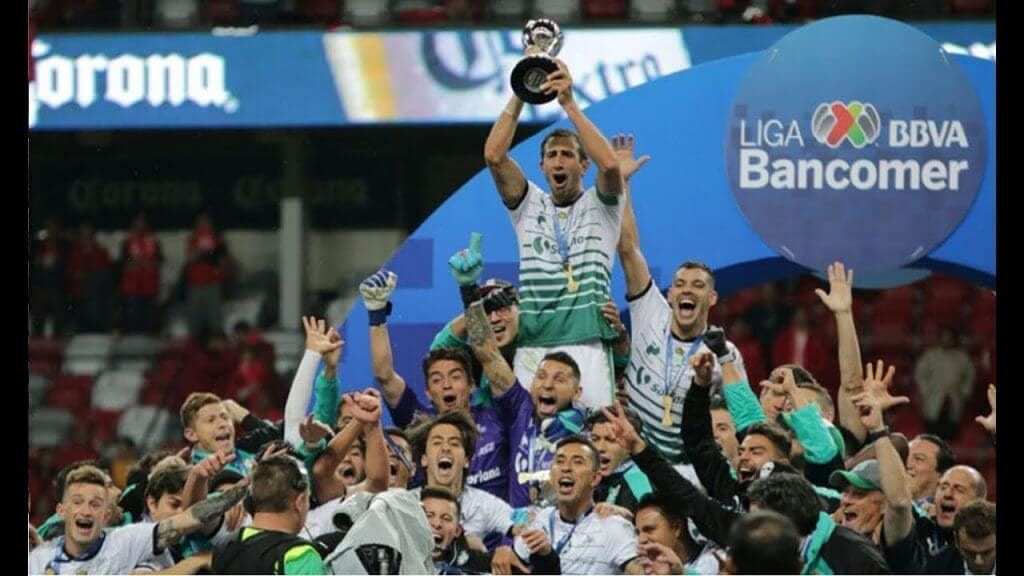
The reigning Clausura champions, Santos Laguna, are in tenth place in the table, so they will have to have a great last stretch of the tournament to be able to aspire to revalidate their title, something that seems complicated because this season they are not performing as they did last season. In fact, Santos Laguna won the 2017/2018 Clausura title by finishing fourth and defeating Tigres in the quarter-finals, Club América in the semi-finals and Toluca in the final, who were the first team to qualify for the tournament.
Once the Apertura and Clausura champions are known, the Campeón de Campeones (Champion of Champions) is played, which pits the two winning teams of these two tournaments against each other in a single match and on neutral ground, with Tigres UANL – winner of the Apertura 2017/2018 – as of today being the champion.
In addition to the Liga MX and the Copa Campeón de Campeones, there is also the aforementioned CONCACAF Champions League. This competition is international and is contested by the best teams in the Concacaf zone (North America, Central America and the Caribbean), with the winner being the representative at the FIFA Club World Cup, which in the last edition was Chivas Guadalajara, one of the teams with the biggest following in Mexico and one of the most successful in its history.
Aim: dethrone America and Chivas
América or Chivas, Chivas or América? This is the big question that most football fans around the world asked themselves some time ago when deciding whether to follow and cheer on Mexican football. And the fact is that we are facing two true ‘transatlantics’ of the sport. Two elite clubs that, by squeezing their principles, have achieved the right results to become Latin American powers, so it was not easy to be young and not choose to support one of these teams.
However, Mexican football has changed a lot in recent times thanks to the ambition of the rest of the Liga MX clubs, who have increased their budgets and the quality of their youth academies with the mission of not only eating at the same table as América and Chivas, but also to beat them in terms of results. So today, rather than the question posed above, it is now worth asking which is the best team in Mexican football?
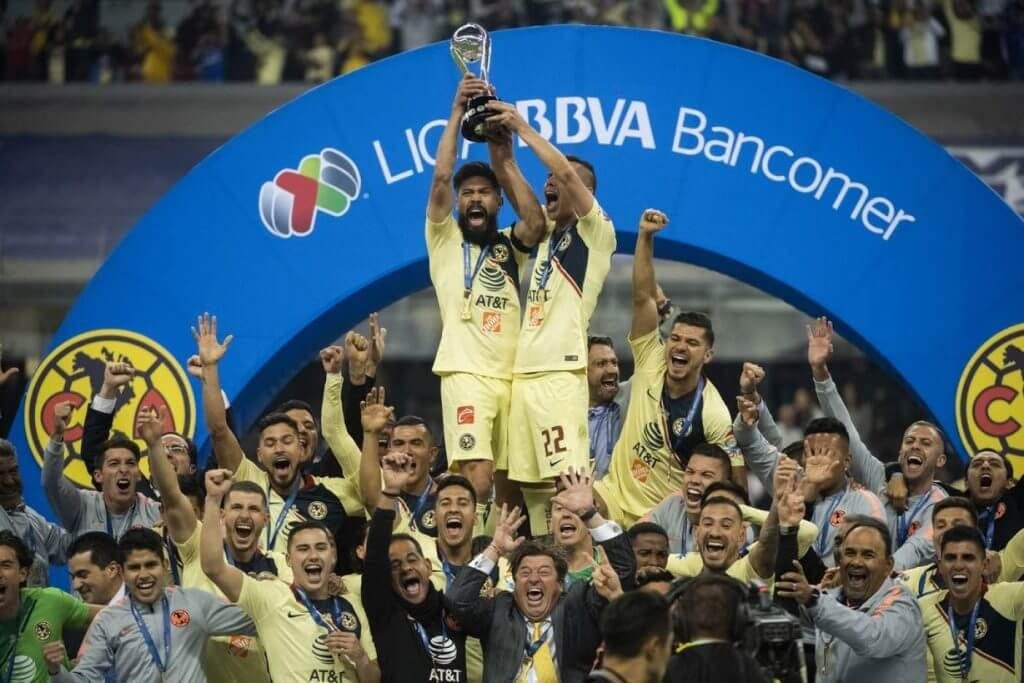
Guadalajara Sports Club:
Known as Chivas, the ‘Rayadas’ are a real fan-generating machine. This club from Guadalajara (Jalisco) is undoubtedly the most charismatic in Mexico thanks to a very particular club culture: that of having only Mexican-born players in its ranks. In the style of Athletic Club de Bilbao, Chivas focuses its project on a specialised recruitment of players and on a youth academy that is very focused on the production of young Mexican players. In addition, thanks to its notorious economic power and extensive track record, most national footballers dream of defending its colours. There is no doubt that it is the team with the biggest following in the country. Part of that success comes from the large number of titles won since its foundation in 1906: 12 Leagues, 4 Mexican Cups, 7 Champion of Champions Cups, 1 Mexican Super Cup, 2 CONCACAF Champions Cups, 1 Central American Championship. In addition, in 2010 they were invited to the prestigious Copa Libertadores de América and reached the final, although they lost to Internacional de Porto Alegre. Finally, it is very important to note that it is one of the two entities that have never lost their place in the First Division. The other is Club América.
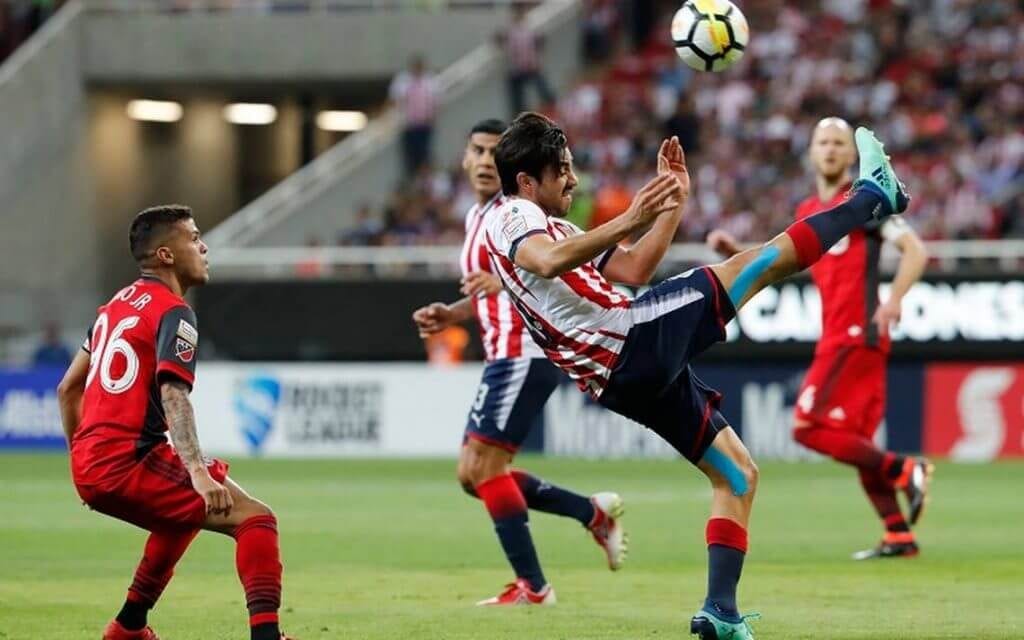
America Football Club:
Club América shares success with Chivas precisely by going for other principles. This Mexico City team – it plays its home games at the impressive Estadio Azteca – is a title-winning beast. With a budget commensurate with their ambition to be the most popular team in Mexico and beyond, Club América does not cut corners when it comes to investing in their players, something that allows them to have a squad that is a contender for absolutely everything every season. With an enviable track record (13 Mexican League titles, 5 Mexican Cups, 5 Champions League titles, 7 CONCACAF Champions League titles, 2 Interamerican Cups and 1 CONCACAF Giants Cup), the Aguilas generate a curious duality: you either love the team or you hate it.
Tigres Football Club of the Autonomous University of Nuevo León:
Tigres UANL is certainly the club that has grown the most in recent years, both in terms of success and fans in world football. The club from the city of San Nicolás de los Garza (Nuevo León) has set out to break the América-Chivas duopoly. And in the fast lane. With a sizeable budget, they have managed to acquire experienced international players who know what it is like to compete at the highest level. In fact, their track record has grown to such an extent that they now have 6 Leagues, 3 Mexican Cups and 3 Champions Cups, although they have yet to triumph in international tournaments despite having reached the final rounds – runners-up in 2015 in the Libertadores and in 2016 and 2017 in the CONCACAF Champions League. There is no doubt that sooner rather than later an international title will be lifted at ‘El Volcán’.
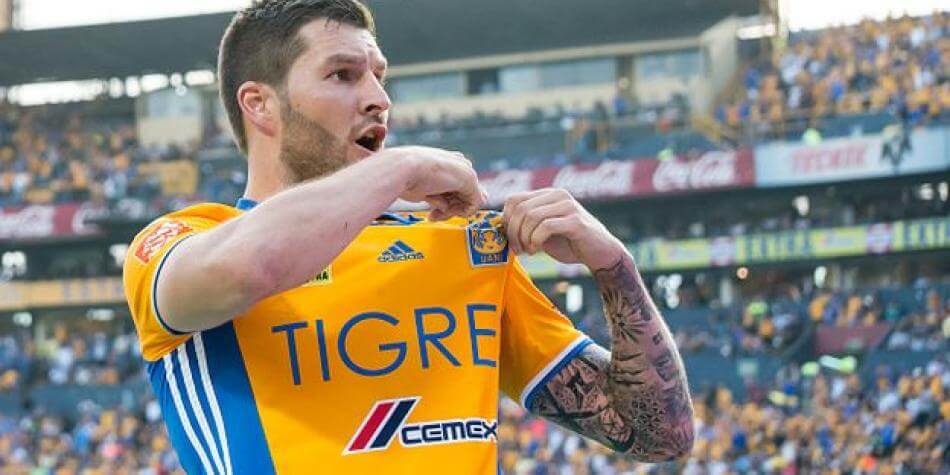
Monterrey Football Club:
It is the team that season after season has as one of its missions to conquer ‘El Volcán’. The Tigres UANL stadium is the stage where their great rivals Rayados dream of emerging victorious in order to dedicate El Clasico Regio to their fans. Since Monterrey was founded in 1945, the fans have won four league championships, two Mexican Cups, one CONCACAF Cup Winners’ Cup and three CONCACAF Champions Leagues, all three of which were won consecutively. It is always a contender for everything.
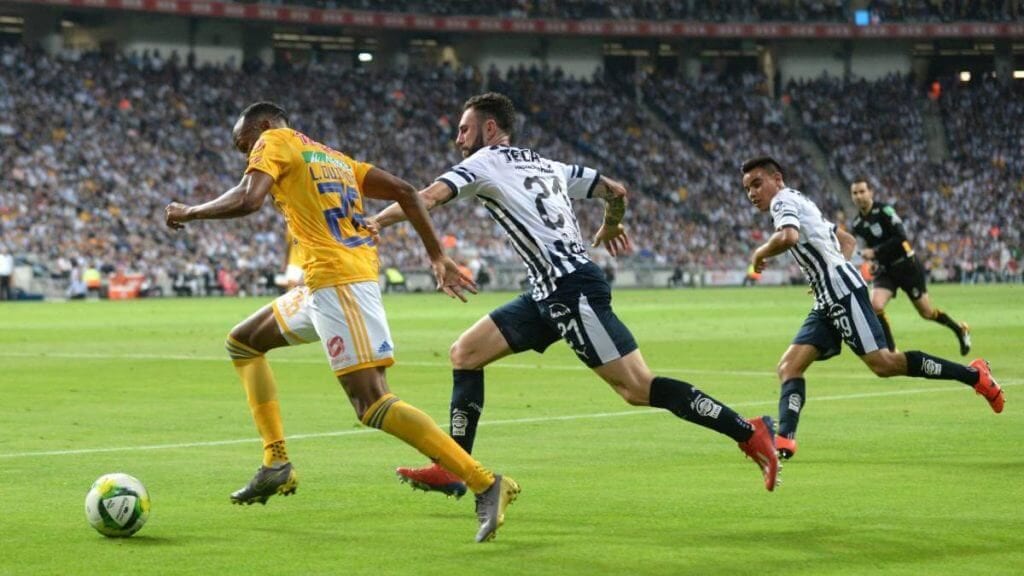
Cruz Azul Football Club:
Cruz Azul is synonymous with football. With a very particular style of attacking play and possession, this club from Mexico City is one of the most popular. La Máquina Cementera’, the nickname they received in the 70s, was a real roller, beating any rival and achieving success that has allowed them to become one of the most popular clubs in the country, third in the country -just behind Chivas and Club América-. Their trophy cabinet is full of titles such as 8 Leagues, 4 Mexican Cups, 2 Champion of Champions and 6 CONCACAF Champions Leagues. In 2001 they were also runners-up in the Libertadores under coach José Luis Trejo.
Pachuca Football Club:
The dean of Mexican football. Created in 1892, no less, and with a philosophy very much in keeping with its years of existence. Pachuca is the club that places most emphasis on its youth academy and does not hesitate to create sporting projects based on the performances of its young players. However, this is a problem nowadays, as the economic power of other competing clubs means that they have to let go of their promising youngsters early, so that they are unable to challenge for the final fight for important titles. Nevertheless, they always compete and this is reflected in the end in their track record: 6 Ligas, 5 CONCACAF Champions League and 1 Copa Sudamericana, and thanks to this last triumph they are the first team to win an international tournament outside CONCACAF. Quite a milestone.
Deportivo Toluca FC:
Toluca are a nightmare for their rivals in Liga MX. Los Diablos Rojos’ have a very special relationship with this championship that they have not yet been able to reflect in a clear way in the rest of the tournaments, no matter how hard they have tried. Toluca is the third team with the most league titles (10), followed by 2 Mexican Cups, 4 Champions Cups and 2 CONCACAF Champions Cups. They dream and work tirelessly to return to being the club that made fans fall in love with them in the early 2000s.
Beyond these teams, the rest of the Liga MX competitors are by no means far removed from their successes. In fact, clubs such as UNAM, Santos Laguna, Atlas, Nexaca or León are capable of giving football fans more than one joy, or a scare.
Who are the best Mexican footballers?
Discussing football on every street corner and at all hours of the day is something normal in a country as football-loving as Mexico. With a press that is critical and very much on top of the movements of the MX clubs, this Latin American country is always something to talk about, especially because of the level of its players and the expectations placed on them. However, Mexico has the thorn in its side of not seeing its great talents succeed at the highest level, something they are working to change.throughout history, Mexico has had players considered stars.
The first who marked an era and was the mirror in which subsequent generations looked up to was striker Hugo Sánchez, who made a name for himself in the Spanish football hall of fame thanks mainly to his goals for Real Madrid. And who hasn’t seen a goal scored by this star, born in 1960 in Mexico City?
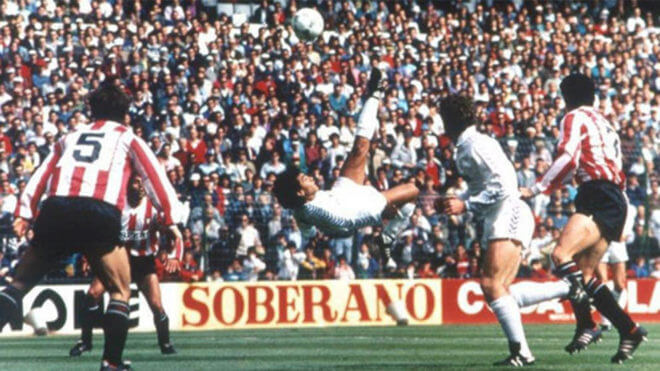
Another legend of Mexican football is Rafa Márquez. The centre-back, with an exquisite way with the ball and an accurate shot, became one of the best defenders in the world in the first decade of the 2000s. He won practically everything while playing for Barça, including two UEFA Champions League titles and four Spanish league titles. He retired in the summer of 2018 at Atlas FC, his club of origin.
Hugo Sánchez, Rafa Márquez and one name is missing to complete the ‘Olympus’ of Mexican football: Cuauhtémoc Blanco, an attacker with a ferocious eye for goal and a supernatural charisma. Born in Mexico City in 1973, Cuauhtémoc has excelled in all the teams where he has played, and these are not exactly few: Club América, Nexaca, Valladolid, Veracruz, Chicago Fire and Puebla. He may be a step below Hugo Sánchez and Rafa Márquez in international terms, but the impact his performances and goals had on Mexico make him a legend.
The same legend as other legendary players such as Luis García, Jorge Campos, Borgetti, Claudio Sánchez and, among others, ‘Matador’ Hernández, names that will have the honour of sharing these triumphant adjectives with players from Mexico’s most recent generations who are still active. Guardado, Héctor Herrera, Chicharito, Raúl Jiménez and Hirving Lozano are on their way to staying in the hearts of Mexican fans.
However, beyond the first two names (Guardado and Herrera) are those of the generation of striker Chicharito, in which they all share the same ‘curse’: that of not reaching the expectations created. Chicharito was an explosion for Mexican football after his move to Manchester United. Coming from Chivas, where he broke the Liga MX with goals, a lot was expected from an attacker with a lot of gunpowder and that precious gift of ‘opportunism’. However, despite scoring goals and even earning a starting berth, he never really took off, something he tried to do at Real Madrid, where he scored important goals, but was unable to establish himself either. He now plays in the English Premier League for West Ham. Other footballers with parallel careers to Chicharito were Carlos Vela and the brothers Giovani and Jonathan Dos Santos.

Knowing the experience of these players, players like Raúl Jiménez and Hirving Lozano still have time – and plenty of it – to move away from this curse and follow in the footsteps of Guardado and Herrera, two established players who could have been so much more. Guardado is living a second youth at Real Betis and Héctor Herrera is the leader of FC Porto, quarter-finalists in the UEFA Champions League. As for Raúl Jiménez and Hirving ‘Chucky’ Lozano, they are two youngsters who have burst onto the European scene with a vengeance, having spent their formative years at clubs such as Benfica and PSV. Raúl Jiménez is currently one of the revelations of the Premier League thanks to his attacking resources and his numerous goals for Wolverhampton and Lozano is a nightmare for defences and a player whose potential is enormous and who is ready to show it at a top European club.
In addition to their potential, both Chucky and Raúl Jiménez made a decision that should be taken as a mirror to be followed by the new generation of Mexican footballers: to make the leap to Europe by the hand of star-forming clubs and leagues where minutes and competitiveness are assured: the Eredivisie and the Liga NOS. Precisely one of those who has taken the path to complete his training in Europe has been Diego Lainez, a player born in 2000 and who, after excelling at Club America, has opted for Real Betis before taking on the challenge of succeeding in a European football powerhouse. The next to take that step should be: Rodolfo Pizarro (Monterrey), Cesar Montes (Monterrey), Edson Alvarez (America), Victor Guzman (Pachuca), Erick Aguirre (Pachuca), Orbelin Pineda (Chivas), Roberto Alvarado (Cruz Azul), Jonathan Gonzalez (Monterrey) and Marcel Ruiz (Queretaro).
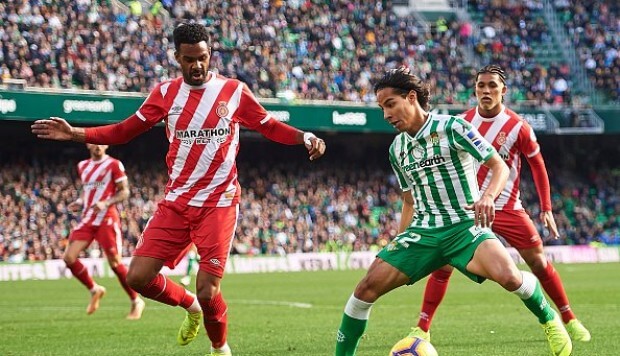
The Tricolour dream: the Mexican national team.
The Mexican national football team, known as the Tricolor or directly El Tri, is one of those teams that every football fan counts on for the final stages but then doesn’t give much importance to their progress in the tournament. The fact is that El Tri have not been accurate at key moments in international tournaments and when they should have made an impact they have not done so. However, there are green shoots and the performance at the 2018 World Cup gives hope to a country that dreams of great things beyond CONCACAF, a territory dominated by them with great authority. In terms of international tournaments, Mexico has won the gold medal at the London Olympics (2012) and two U17 World Cups (2005 and 2011), important tournaments but which do not satisfy one of the countries that are most passionate about the sport.
In fact, in all the final stages of the FIFA World Cup it is common to see a large number of Mexican fans in the stands supporting the Tricolor, something that says a lot about a culture that will not rest until it succeeds at national team level. And they came close to doing so last summer at Russia 2018 had it not been for the ghosts of the past returning to haunt them. Coached by Juan Carlos Osorio, a coach who opted for a very European style of football, the Mexican national team surprised everyone in the group stage by beating the feared Germany – who defended the title – and defeating South Korea, two victories that, despite the defeat against Sweden, allowed them to advance to the Round of 16.
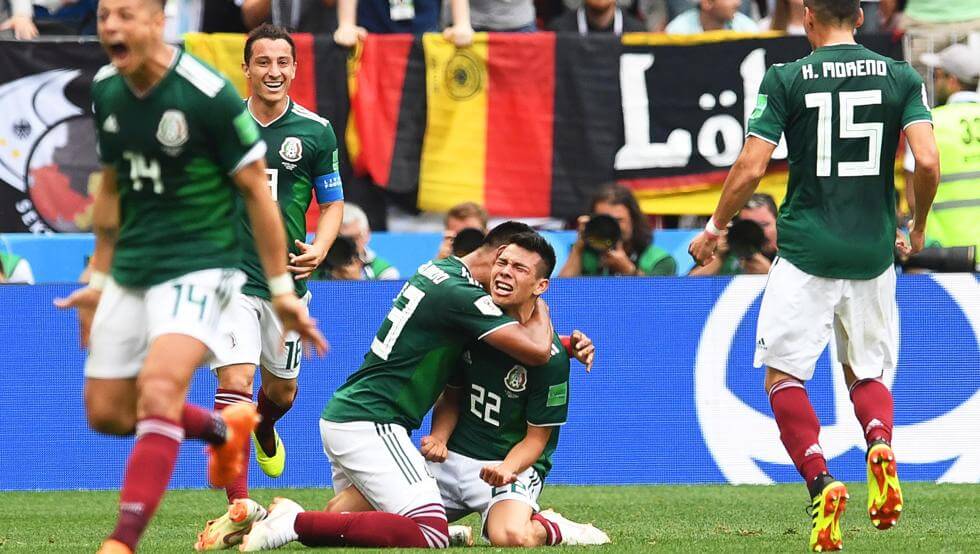
Round of 16 or the Mexican nightmare. The fact is that this round is very difficult for the Tricolor, who had to face Brazil, losing by two-nil, making it the seventh consecutive time they have been eliminated in the Round of 16.
In 2019, Mexico’s senior national team has undergone a new change of direction, with Argentine coach ‘Tata’ Martino at the helm, an award-winning and experienced coach who will try to give the Tricolor one last push. His debut with El Tri could not have been better, as in his first match as coach (held on 23 March) he beat Chile by three goals to one thanks to goals from Raúl Jiménez, Héctor Moreno and Hirving Lozano. Tata, who is preparing the national team to regain the CONCACAF title lost at the expense of the USA in the last edition, put out a starting eleven full of top players: Ochoa in goal; defenders Luis Rodríguez, Carlos Salcedo, Héctor Moreno and Jesús Gallardo; midfielders Edson Álvarez, Carlos Rodríguez and Andrés Guardado; and forwards Hirving Lozano, Rodolfo Pizarro and Raúl Jiménez.
Which Mexican players have played in Europe in the Portuguese league?
Here is a list of the thirteen Mexican players who have played in the Portuguese league. Since it is one of the preferred destinations to play in Europe due to the similarity of the type of game.
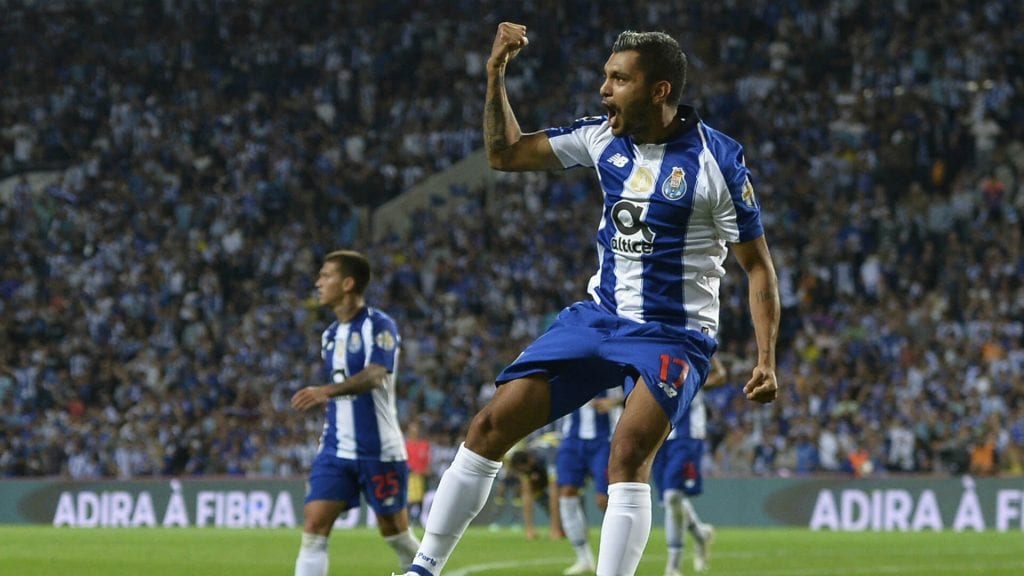
- Manuel Negrete in 1986 at Sporting Lisbon
- Francisco Fonseca in 2006 with Benfica
- Edson Rivera in 2012 at Sporting Braga
- Diego Reyes in 2013 at FC Porto
- Héctor Herrera in 2013 at FC Porto
- Raúl Gudiño in 2013 at FC Porto, Union Madeira
- Ulises Dávila in 2015 at Vitoria Setuval
- Jesús Corona in 2015 at FC Porto
- Omar Govea in 2015 at FC Porto and FC Porto B
- Miguel Layún in 2015 at FC Porto
- Raul Jiménez in 2015 at Benfica
- Joao Maleck in 2017 at FC Porto B
- Antonio Briseño in 2017 at Feirense
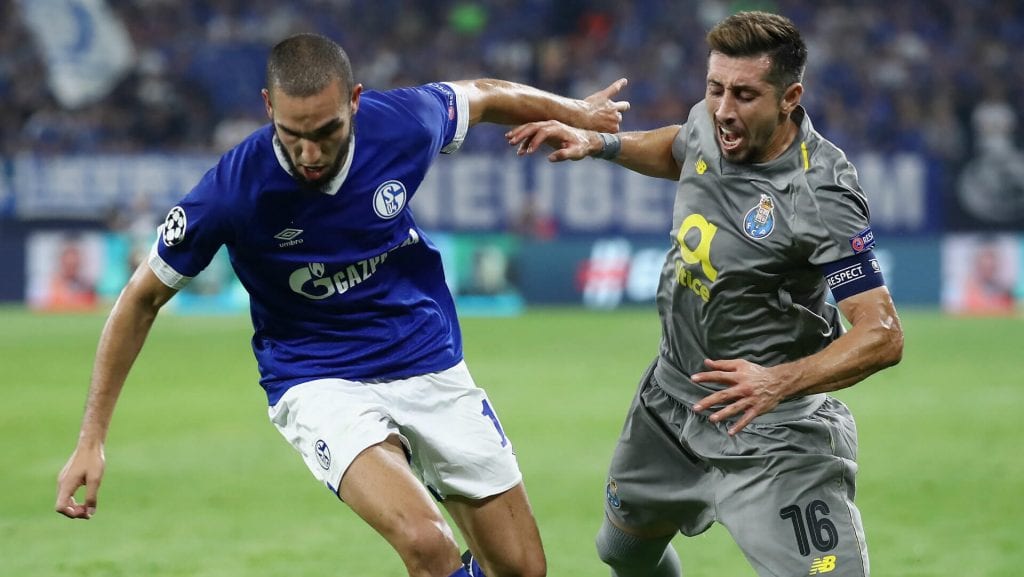
Which Mexican players have played for FC Porto in the last year?
Porto, after four years without winning the Primeira Liga, won their 28th league title last season. The Dragons ended Benfica’s four-year hegemony. Four Mexican players played throughout the season.
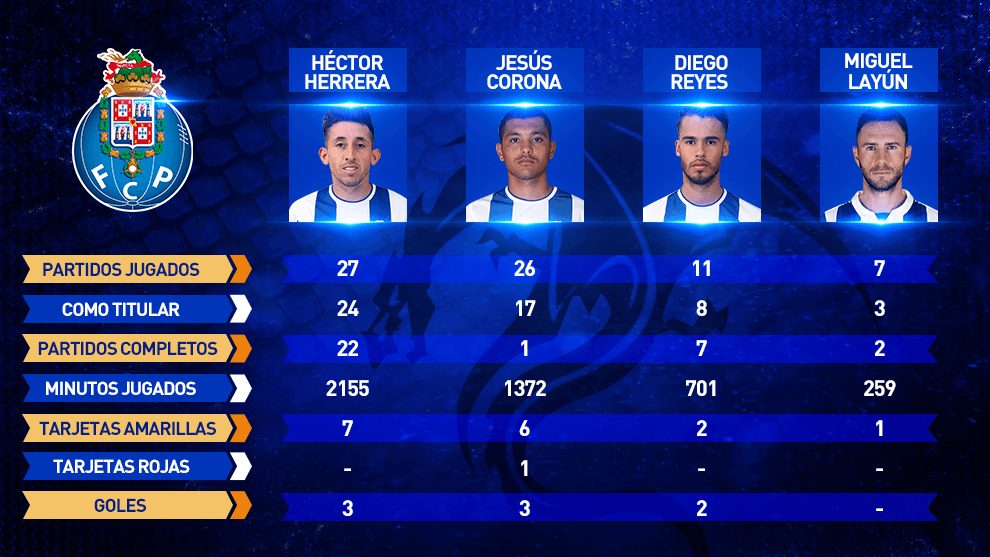
Soccer Inter-Action is FC Porto’s international academy in Spain to develop talent.
Several of the academy’s players have had trials at FC Porto and pre-season training with FC Porto B.
.

If you want to know what football is like in Mexico If you want to know what football is like in Chile
If you want to know what football is like in Korea If you want to know what football is like in Japan
If you want to know what football is like in Brazil If you want to know what football is like in the USA.
If you want to know what football is like in Spain If you want to know what football is like in Australia
If you want to know what football in Gabon is like If you want to know what football is like in Australia
If you want to know what football is like in Singapore If you want to know what football is like in …….



